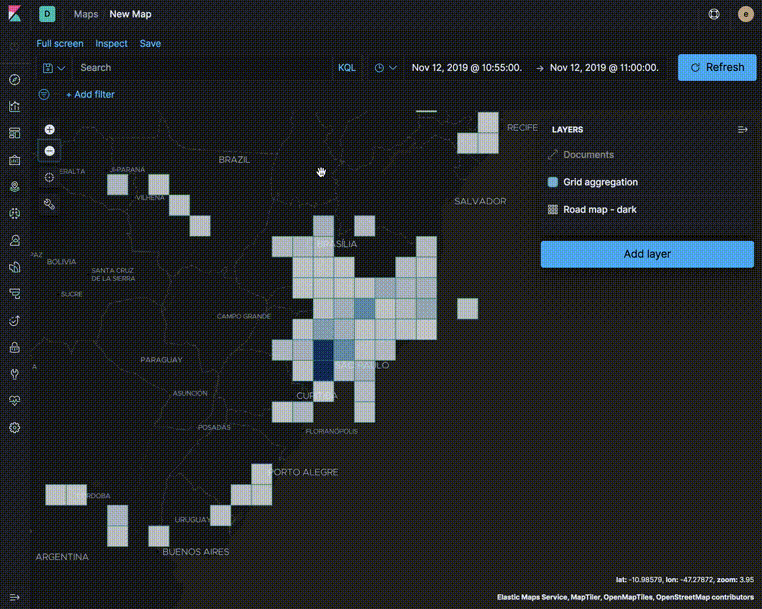- Kibana Guide: other versions:
- What is Kibana?
- What’s new in 7.8
- Get started
- Set up Kibana
- Discover
- Dashboard
- Canvas
- Maps
- Machine learning
- Graph
- Visualize
- Logs
- Metrics
- APM
- Uptime
- SIEM
- Dev Tools
- Stack Monitoring
- Management
- Advanced Settings
- Alerts and Actions
- Beats Central Management
- Cross-Cluster Replication
- Index Lifecycle Policies
- Index Management
- Ingest Node Pipelines
- Index patterns and fields
- License Management
- Numeral Formatting
- Remote Clusters
- Rollup Jobs
- Saved Objects
- Security
- Snapshot and Restore
- Spaces
- Upgrade Assistant
- Watcher
- Ingest Manager
- Reporting
- Alerting and Actions
- REST API
- Kibana plugins
- Accessibility
- Limitations
- Breaking Changes
- Release Notes
- Kibana 7.8.1
- Kibana 7.8.0
- Kibana 7.7.1
- Kibana 7.7.0
- Kibana 7.6.2
- Kibana 7.6.1
- Kibana 7.6.0
- Kibana 7.5.2
- Kibana 7.5.1
- Kibana 7.5.0
- Kibana 7.4.2
- Kibana 7.4.1
- Kibana 7.4.0
- Kibana 7.3.2
- Kibana 7.3.1
- Kibana 7.3.0
- Kibana 7.2.1
- Kibana 7.2.0
- Kibana 7.1.1
- Kibana 7.1.0
- Kibana 7.0.1
- Kibana 7.0.0
- Kibana 7.0.0-rc2
- Kibana 7.0.0-rc1
- Kibana 7.0.0-beta1
- Kibana 7.0.0-alpha2
- Kibana 7.0.0-alpha1
- Developer guide
Plot big data without plotting too much data
editPlot big data without plotting too much data
editUse aggregations to plot large data sets without overwhelming your network or your browser. When using aggregations, the documents stay in Elasticsearch and only the calculated values for each group are returned to your computer.
Aggregations group your documents into buckets and calculate metrics for each bucket. Use metric aggregations for data driven styling. For example, use the count aggregation to shade world countries by web log traffic.
You can add the following metric aggregations:
- Average. The mean of the values.
- Count. The number of documents.
- Max. The highest value.
- Min. The lowest value.
- Sum. The total value.
- Top term. The most common value.
- Unique count. The number of distinct values.
Use aggregated layers with document layers to show aggregated views when the map shows larger amounts of the globe and individual documents when the map shows smaller regions.
In the following example, the Grid aggregation layer is only visible when the map is at zoom levels 0 through 5. The Documents layer is only visible when the map is at zoom levels 4 through 24. See the Getting started tutorial for more details on configuring the layers.
